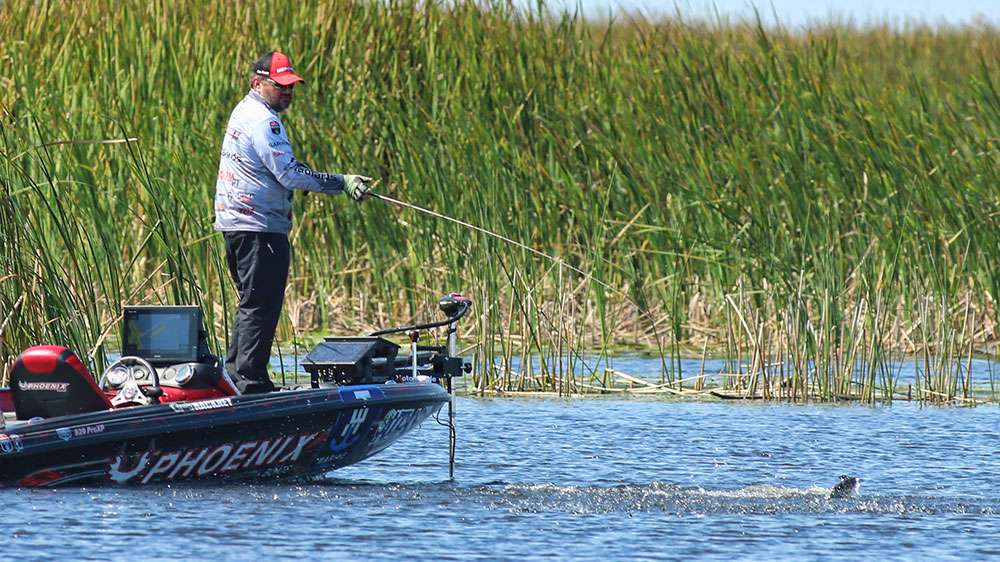
Structure spoons are an effective tool now that summer is on its way. But before we get into my thoughts about them I want to make sure we’re all talking about the same thing.
A structure spoon is not a jigging spoon. Structure spoons are wide and somewhat curved. They have a wobble or sway to them when they’re retrieved or when they fall. A jigging spoon is basically a piece of lead that looks kind of like a minnow. It drops straight down like a rock. The idea behind it is to get over the top of the fish and jig it up and down.
Structure spoons are at their best when the bass are bunched up, out in open water. Unless the bass are busting shad on top they’ll usually be relating to the bottom or suspended. That’s when they’re the most vulnerable to something that looks like a dying shad struggling to swim or falling towards the bottom.
Depth control is critical when they’re out like that. The deal with a structure spoon is that it’s easy to control its running depth. Just count it down and bring it back. A crankbait or a jig can be anywhere between difficult and impossible to hold at a precise horizontal depth. A structure spoon will do that naturally.
In my experience the best way to a fish a structure spoon is to cast it out, past the bass you’re targeting, and then pull it back a ways before you allow it to fall on a semi-slack line. Count it down to a couple of feet above the bass before you let it fall. The idea is to make it look like it’s trying to swim to safety but then giving up on the fight.
There are two ways to rig a structure spoon. My way is to tie your line directly to a split ring on the nose. That’ll give you a tighter wobble and make the spoon look more natural. The other way is to use a swivel — more action. No less an angler than Kevin VanDam does it that way.
The one drawback to my rigging choice is that you will get line twist. There’s no way to avoid that. It’s inherent in the direct tie. If you can’t live with that, go with a swivel.
Another issue with structure spoons is that your line will sometimes foul on the hook. Again, theres’ no way to totally eliminate it, but you can lessen the problem by fishing with heavy fluorocarbon line. I use Gamma 20-pound test. Do not use monofilament — too much stretch. And do not use braid. It’ll foul and if the point of the hook goes through the line you’ll never get it undone. You’ll have to cut it out and retie.
The other advantage to heavy fluorocarbon is that it helps rock the bait back and forth as you pull it through the water.
Note: I never wind my structure spoon back. I always pull it. Honestly, I don’t know why pulling works better, but I know that it does.
I fish structure spoons with a medium-heavy, 7-foot, 6-inch casting rod and a high-speed reel. These are heavy baits. I fish the Strike King Sexy Spoon. The 4-inch version weighs .8 ounces, and the 5.5-inch version weighs 1.3 ounces.
My preference is the 5.5 inch model. It’s big enough to attract big bass but small enough to get a bite from an ordinary keeper as well. I’ve fished the giant, 12-inch spoons a few times, but I don’t see where they do any better. I have heard, however, that in some waters they’re the deal.
My final thought about structure spoons is that you shouldn’t think of them as only deep-water baits. They’ll catch as many bass at 5 feet as they will at 50 feet.
Add a few structure spoons to your tackle box this summer. They’ll make a positive difference in your catch.

